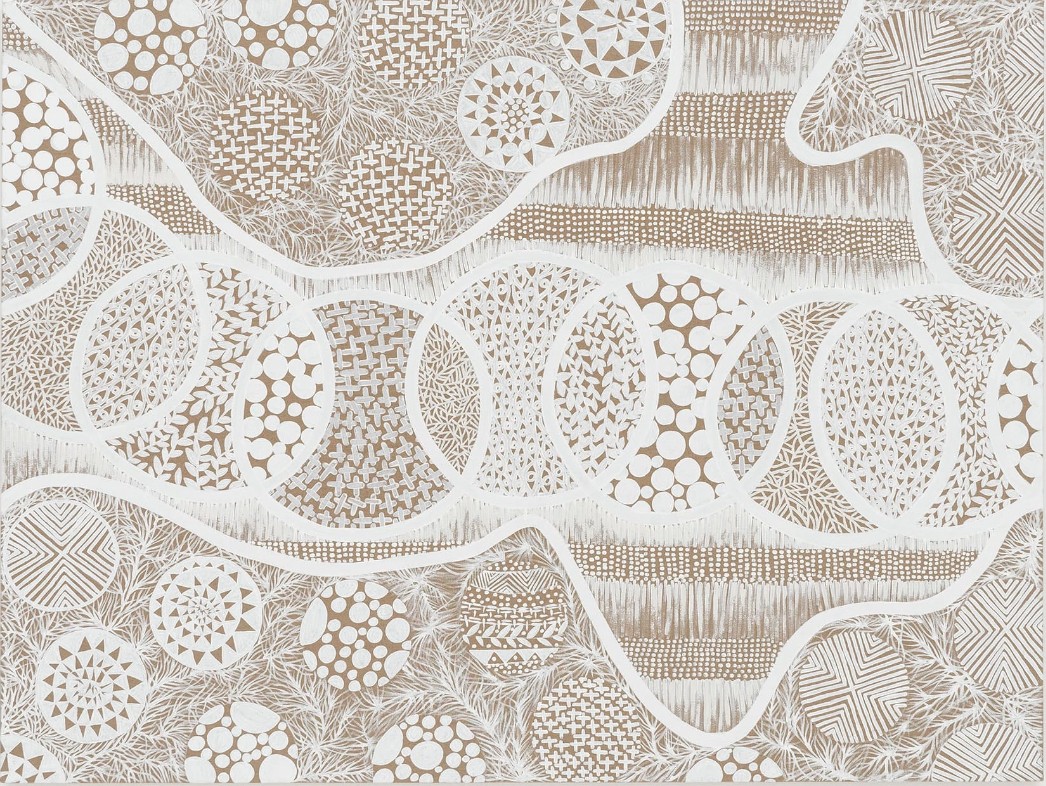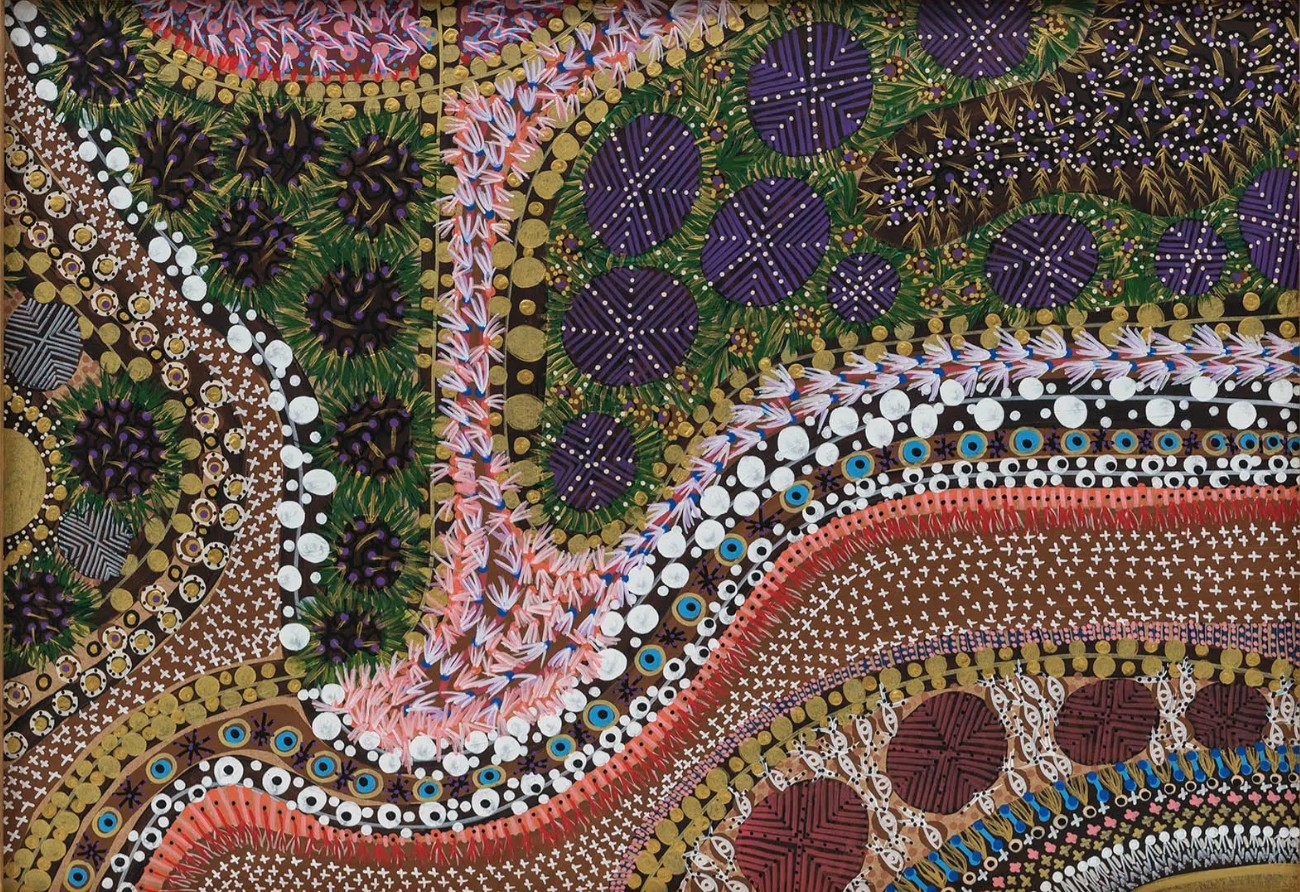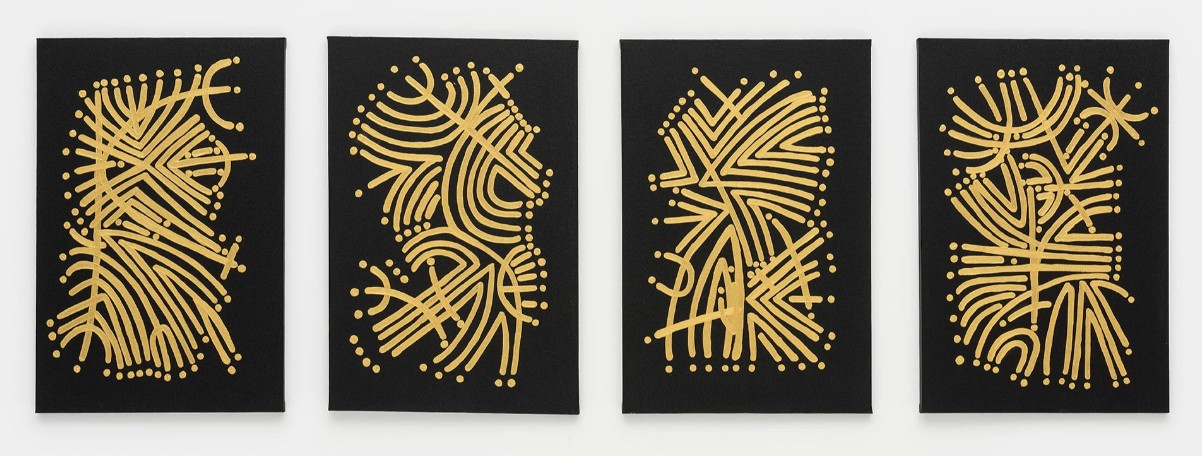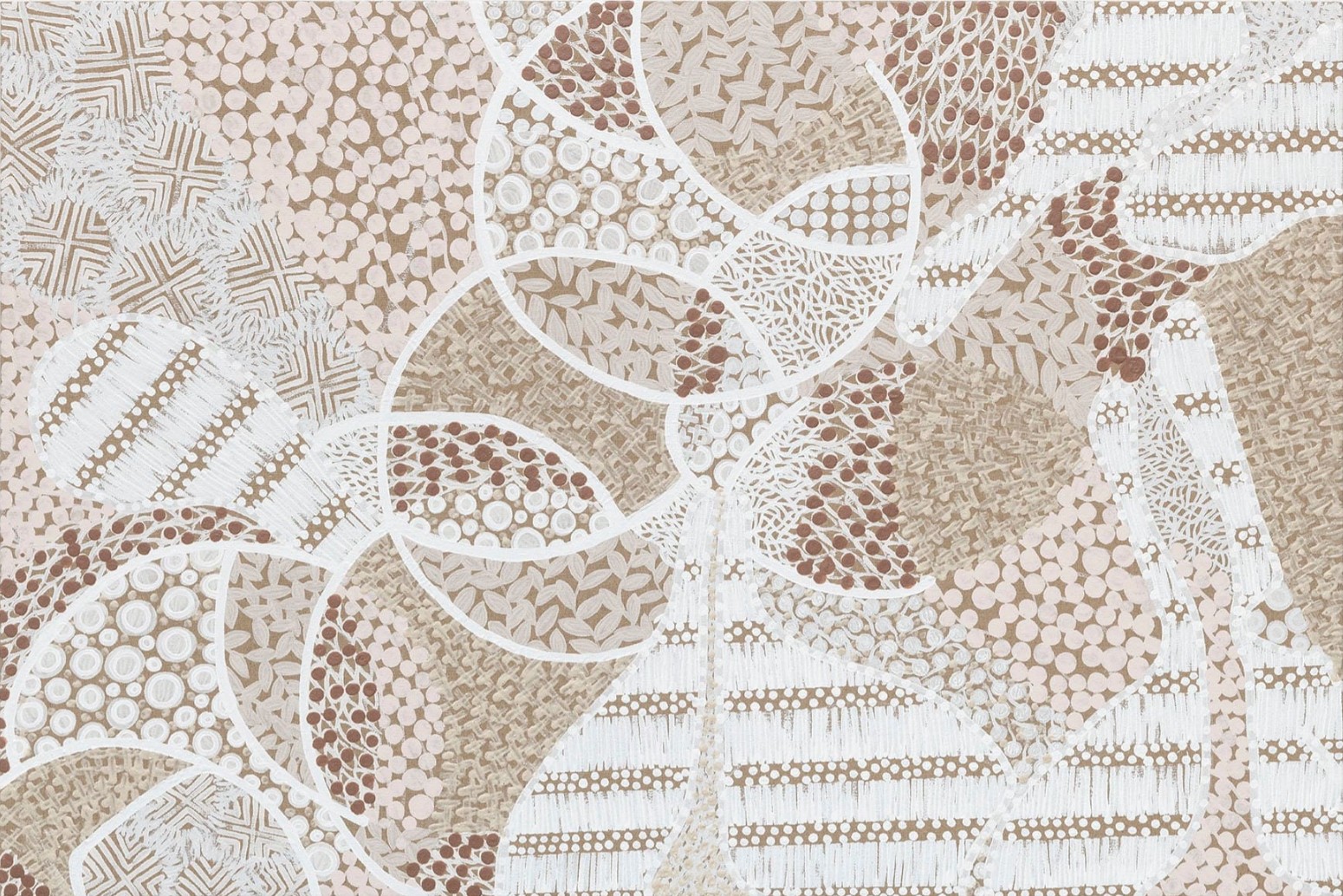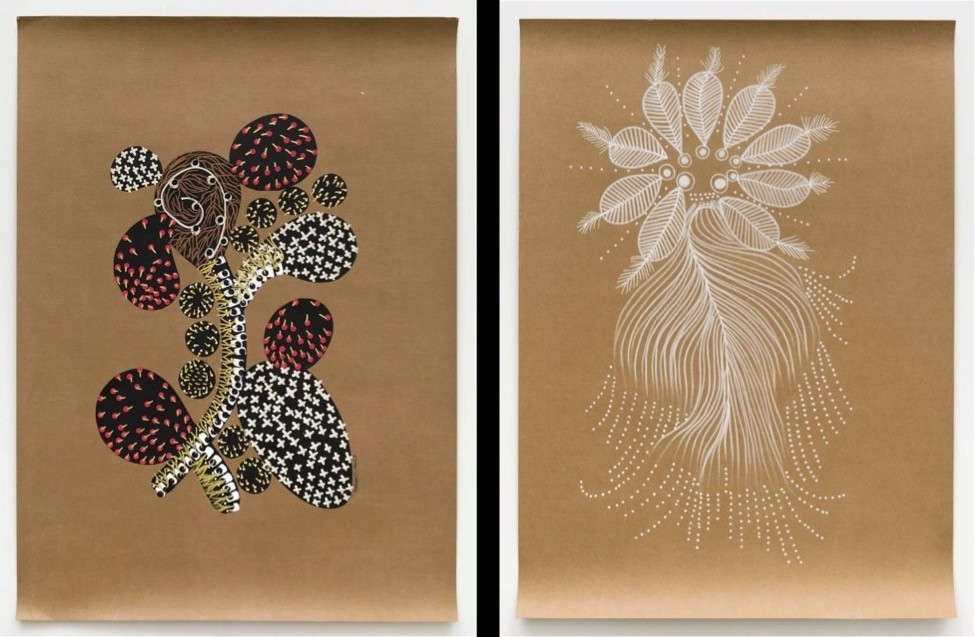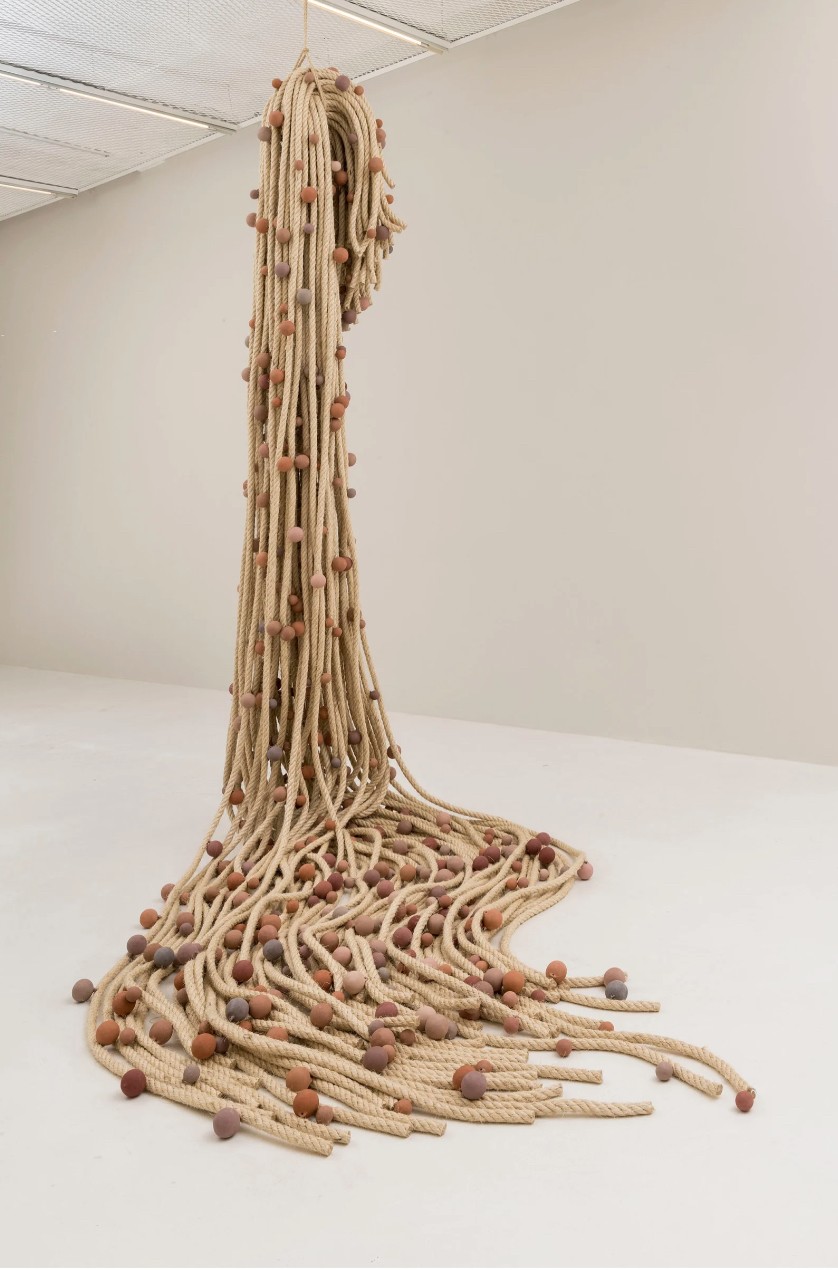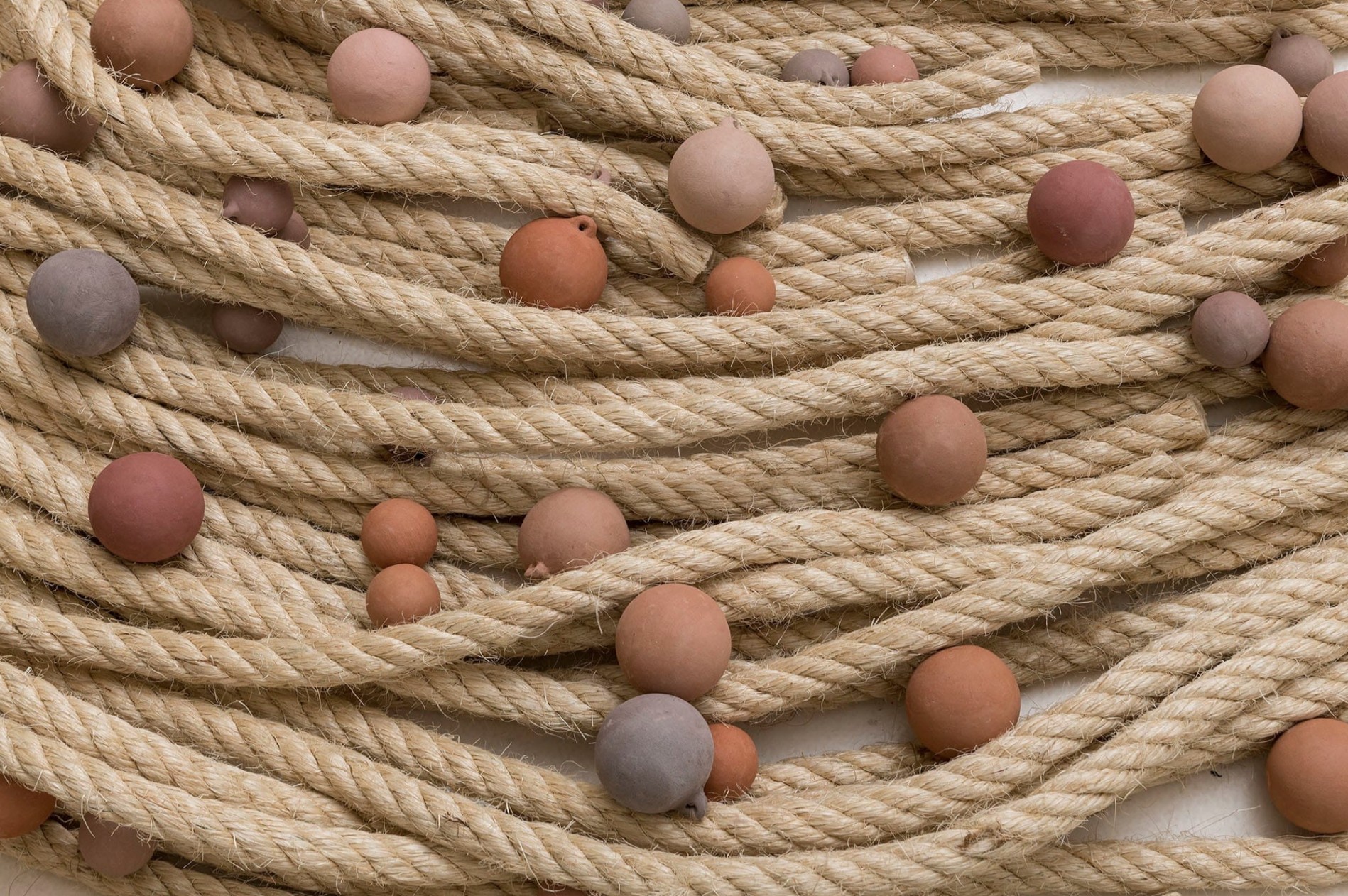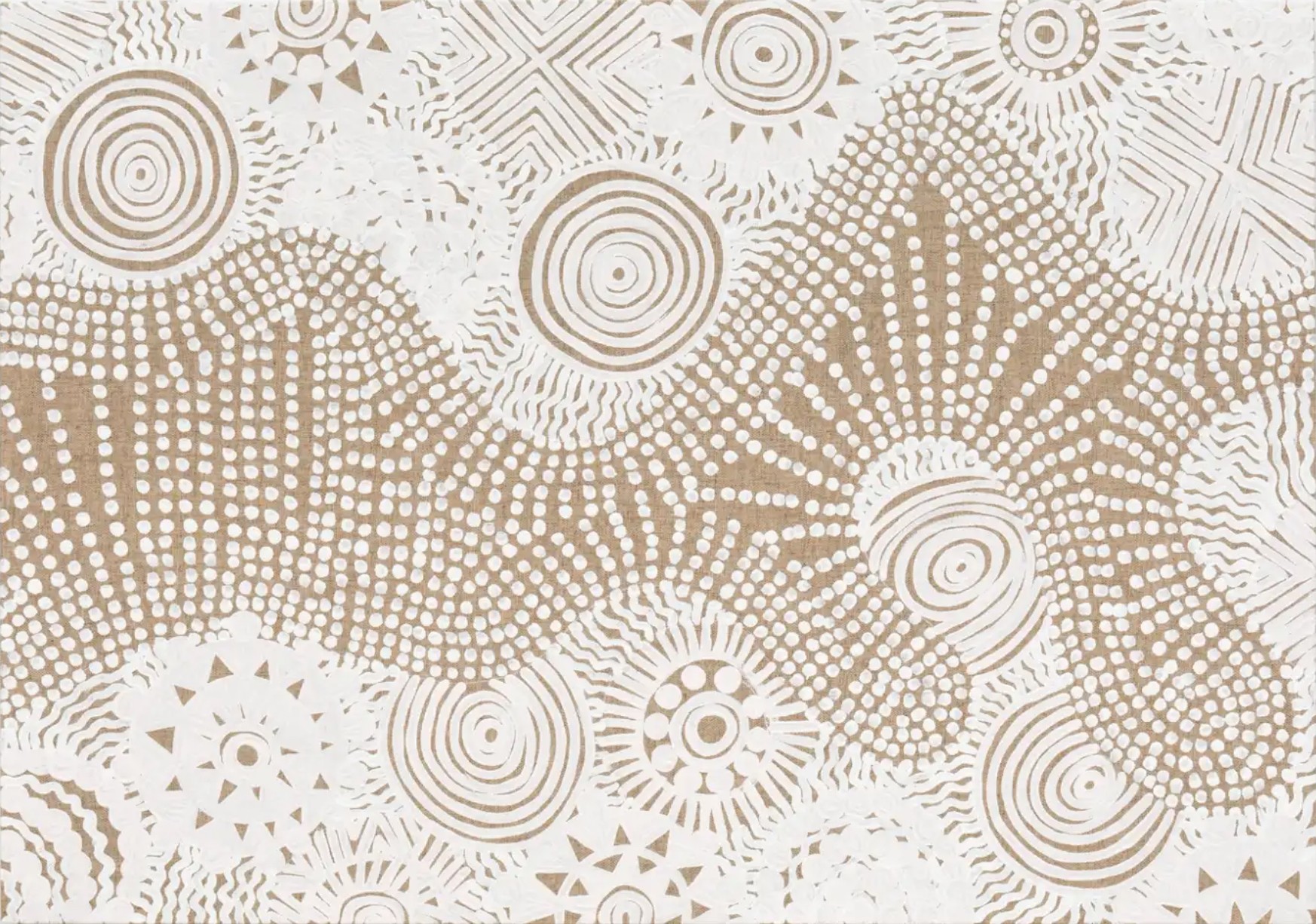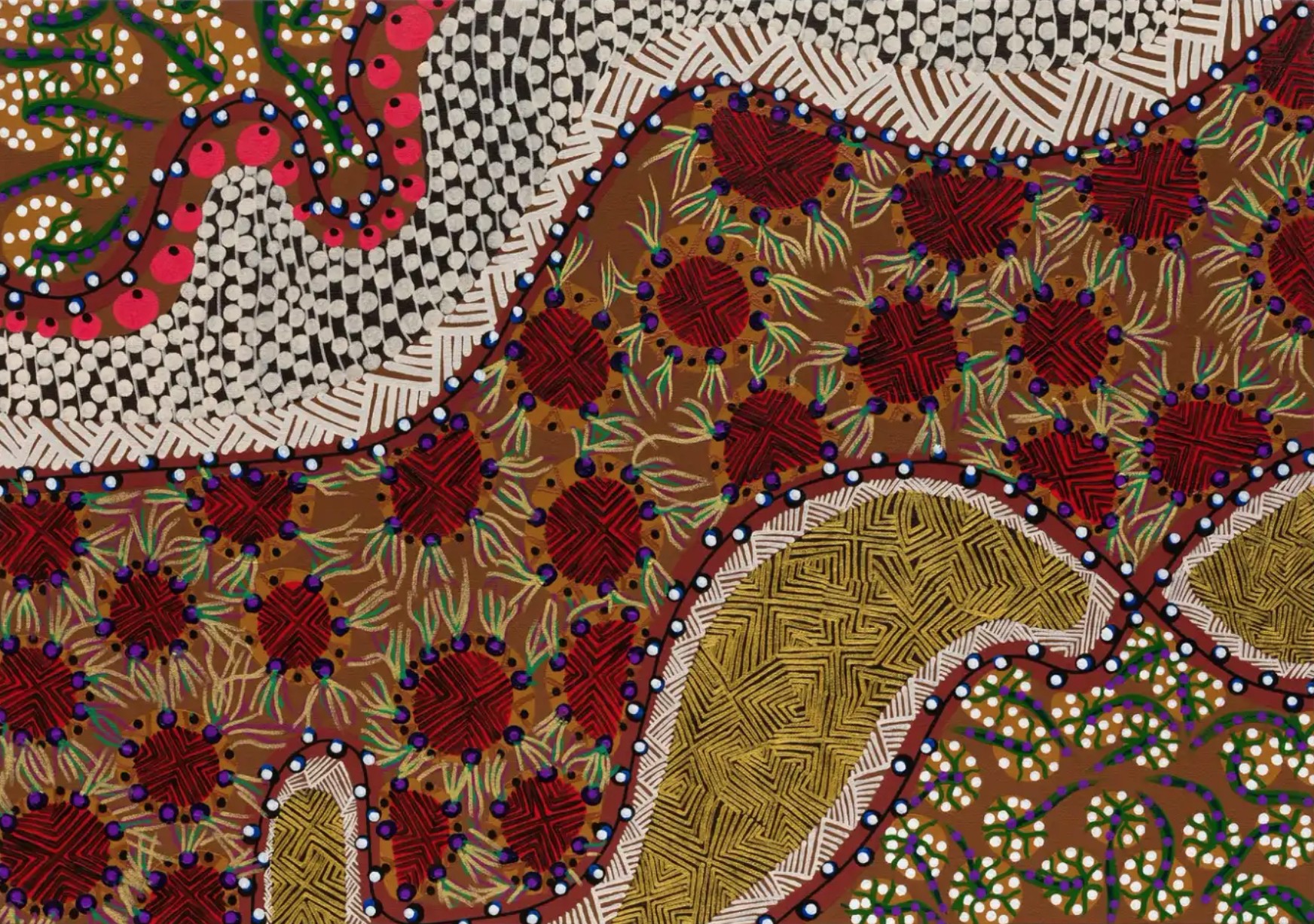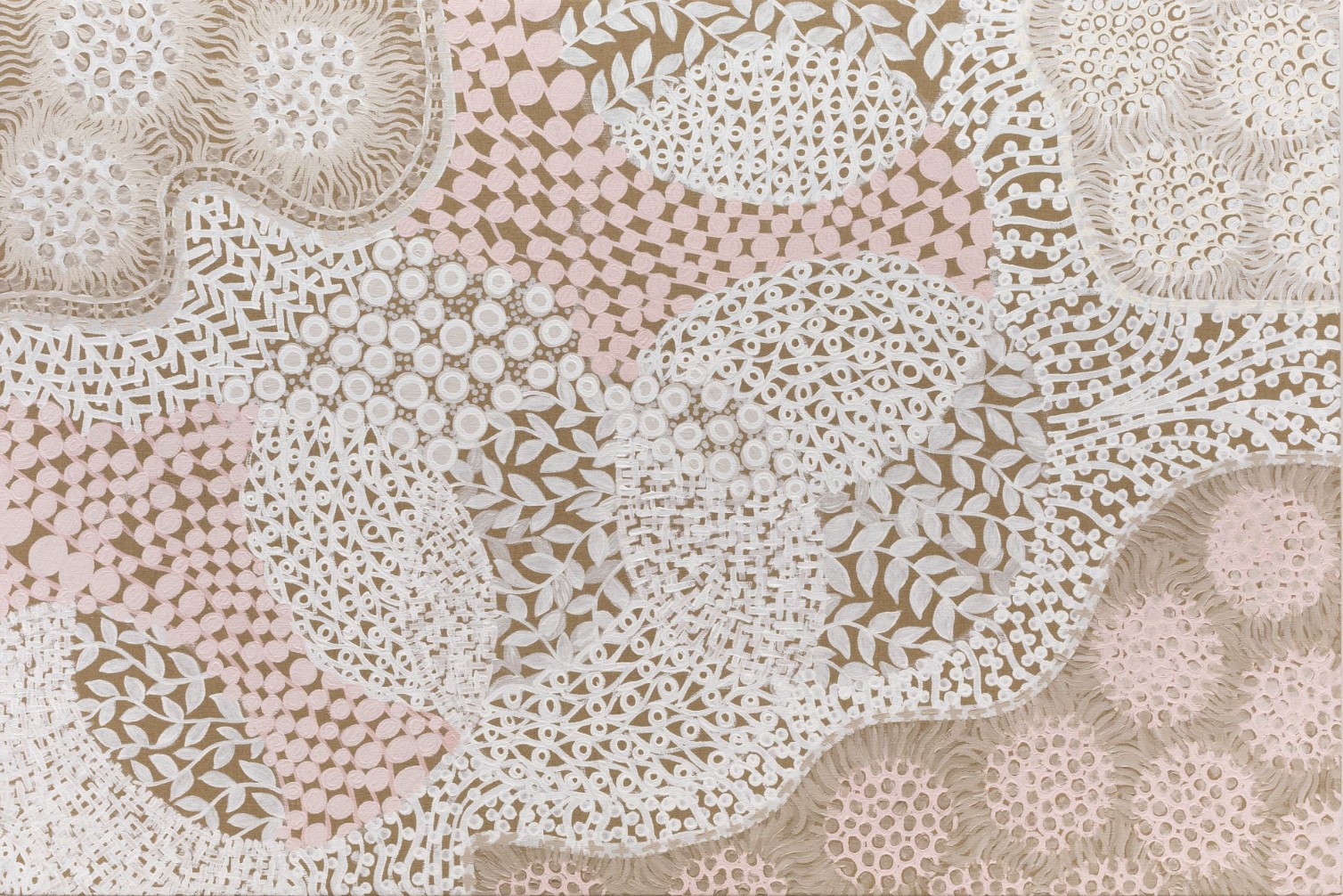Aislan Pankararu: Heritage and Healing
By Laura Heyrman
This Viewing Room features the art of Brazilian indigenous artist Aislan Pankararu (b. 1990). The art of indigenous creators from around the world is growing in importance and this artist’s first exhibition in the United States is currently open in New York City, through June 22, 2024. (see below for link)
Born in Petrolândia in the state of Pernambuco in northeastern Brazil, Pankararu now lives and works in São Paolo. His surname indicates his affiliation with the Pankararu, an indigenous people of that region of Brazil. The artist learned his cultural traditions from his grandmother during childhood in Brejo dos Padres, a significant location within the Pankararu Indigenous Land. Established just 3 years before the artist’s birth, the region is protected land but, as is too often the case, these indigenous people must continue to fight to maintain possession of and control over their territory in the face of settlers seeking farmland. One of the artist’s purposes is to express his people’s beliefs and traditions and to support their resistance and struggle against cultural and territorial loss through images that heal and soothe.
Pankararu graduated from medical school but chose, in 2019, to return to his love for making art. Self-taught, the artist combines his knowledge of molecular and other microscopic structures with his cultural traditions in his work. He creates abstractions filled with complex geometries and ornate patterns. Among the important cultural traditions influencing Pankararu is a ritual dance called the Toré which connects the physical and supernatural realms by blending music, movement, and body painting. The white paints that the artist uses are inspired by his culture's body painting. Eventually he found a way of making paint from the actual white clay used for body painting, which allowed him to integrate this important aspect of his identity into his works. The artist is thoughtful about being respectful and ethical in his use of his people’s traditions in his desire for the Pankararu culture to become more known and understood. At the same time, the artist wants to incorporate what he calls “novelty” into his work. At times, it is surprising how much variety Pankararu produces with relatively simple means.
Another important Pankararu belief that influences the artist’s work is the spiritual beings called the Encantados (The Charmed or Enchanted Ones) who live in the mountains and hills around Brejo dos Padres. The Pankararu people believe that the Encantados manifest themselves as seeds in the human world. Many of Pankararu’s works have patterns and shapes reminiscent of seeds, as well as leaves, cacti, roots, and grasses. These forms are especially recognizable in the artist’s works in color, but also inspire patterns in the white works. To the artist, color is vibrant and magical. This brings us to the third of Pankararu’s sources of inspiration, the caatinga biome of northeastern Brazil. A semi-arid region characterized by shrublands, thorny forests, cacti, and dry grasses, the caatinga is unique to Brazil and has been devastated by past land-use practices such as overgrazing and timber-cutting. The artist’s celebration of the plant and land forms of his native region is a form of indigenous activism and related to his support for protecting the Pankararu Indigenous Land. (Research has shown that protecting indigenous lands results in environmental preservation.) Pankararu was drawn to brown craft paper as a drawing support because it reminded him of the brown earth of his semi-arid homeland. As seen in the paired drawings in the slide show (Força and Untitled, 2023), both color and white stand out from the brown of the paper. The artist has also observed that the color of the paper is very similar to his own skin tone, so the works in white on craft paper refer back to the practice of body painting.
Aislan Pankararu hasn’t been an artist for very long. His work is compelling as a reflection of his culture, but also for its appealing application of materials, pattern, and geometry. One of many indigenous artists gaining audiences worldwide, Pankararu’s creativity introduces us to a culture and artistry that enriches both the art world and the individual viewer.
Video: Produced by Galatea Gallery of São Paolo, this video shows the artist at work on the gallery’s “Mitocôndria Ancestral (Ancestral Mitochondria)” exhibition. LINK: youtu.be/spSL0na61eo
Exhibitions:
•• “Aislan Pankararu l Endless River,” now at Studio 94, New York, until June 22, 2024. LINK: salon94.com/exhibitions/endless-river
•• “Indigenous Histories,” now at Kode Museums-Stenersen, Bergen, Norway until August 25, 2024. LINK: kodebergen.no/en/whats-happening/exhibitions/indigenous-histories
Please share your comments and questions on Substack. LINK: https://irequireart.substack.com/p/viewing-room-21/comments
Longer captions may not be fully visible on smaller screens. We apologize for the inconvenience.
If the caption obscures part of the artwork, click on the image to turn off the caption.
